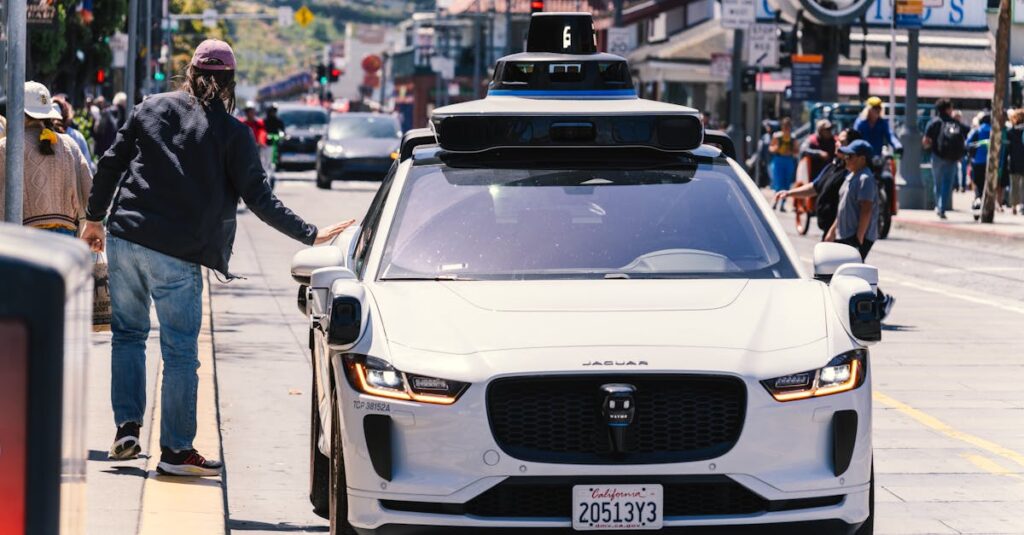Introduction
It’s a scene straight out of a sci-fi movie: you hop into your car, tell it your destination, and let it do the driving while you sit back and relax. Sounds convenient, right? But here’s the question we’ve been asking for years: are we truly ready for self-driving cars, or is this just a futuristic dream that’s still a long way off?
Well, the technology is here. Self-driving cars are no longer just a concept. They’ve already been tested on roads, and some companies have even begun offering limited autonomous driving services. But before we all hand over our keys to the machine, let’s take a closer look at whether the world, technology, society, and infrastructure, is prepared for this change.
What’s the State of Self-Driving Technology?
The idea of self-driving cars dates back decades, but it wasn’t until the 2010s that we started seeing real progress. Companies like Tesla, Waymo, and Cruise have pushed the boundaries of what’s possible with autonomous driving. They’ve developed cars that can navigate highways, change lanes, and even park themselves.
But here’s where things get tricky: while the technology works well in some conditions, it’s still far from perfect. For instance, on well-mapped highways with clear markings, an autonomous vehicle can perform quite well. However, when it encounters unpredictable situations, like a pedestrian crossing unexpectedly, a cyclist swerving in front, or even a heavy rainstorm, things can get a bit dicey.
Consider this real-world example: in 2018, an Uber self-driving car struck and killed a pedestrian in Arizona. While this tragic incident was due to a combination of factors, including human error and technology limitations, it highlighted one of the major concerns with fully autonomous vehicles, how they respond to the unpredictability of human behavior.
So, How Close Are We?
In terms of technology, we’re closer than ever to fully autonomous cars. But achieving true “Level 5” autonomy, where a car can drive itself in any situation without human intervention, is still a few years away. Right now, most self-driving cars are at “Level 3” autonomy, meaning they can handle certain driving tasks but still require human oversight in complex scenarios.
What’s really holding us back is not just the tech, but also the unpredictability of real-world environments. Unlike the controlled conditions of a test track, roads are full of variables, road debris, weather, other drivers making bad decisions. Until we can guarantee that an autonomous car can handle every one of these situations, we won’t see widespread adoption.
The Legal and Ethical Dilemmas
Even if the technology were perfect, there’s still the question of how we regulate it. Governments around the world are struggling to catch up with the rapid pace of autonomous driving development. For instance, different countries have different laws regarding the testing and deployment of self-driving cars. Some places are more lenient, while others are hesitant to allow autonomous vehicles on the roads at all.
There’s also the ethical dilemma. Who’s responsible when an autonomous vehicle is involved in an accident? Is it the manufacturer? The software developer? Or the car owner? These are questions lawmakers are grappling with. And let’s not even get started on how society will react to the idea of machines making life-and-death decisions on the road. It’s a hard pill to swallow for some, even though we already trust machines with decisions in many other areas of our lives, like when we use credit scores to determine loans or algorithm-driven suggestions for our next Netflix binge.
The Challenges of Human Trust
We can’t ignore the trust factor. It’s one thing to trust your car to park itself; it’s another to trust it with your life on a busy street. Studies have shown that while many people are intrigued by the idea of self-driving cars, they’re still hesitant about giving up control. In fact, a 2020 survey revealed that 63% of Americans were not ready to trust autonomous vehicles for their daily commute. The thought of a machine making split-second decisions is just too unsettling for many.
But trust can be built over time. Think about how we all felt about seatbelts or airbags when they were first introduced. In the beginning, there was resistance. Now, they’re standard, and we wouldn’t dream of driving without them. It’s possible that self-driving cars could eventually win over the public in the same way, but it will take time.
What’s Next?
We’re already seeing early implementations of self-driving technology. In certain cities, people can summon autonomous taxis through services like Waymo One, where they’re driven by fully autonomous vehicles. But for the most part, we’re not yet at the point where self-driving cars will be common on every street corner.
What could speed up the adoption process? One factor is infrastructure. For self-driving cars to be truly effective, our roads, traffic lights, and signs need to be compatible with their sensors. Cities might need to redesign roads, install special signage, or even create separate lanes for autonomous vehicles. Until then, we might have to rely on a hybrid approach, where human drivers and self-driving cars coexist.
One Step at a Time
While it might feel like we’re on the cusp of a self-driving revolution, we’re still in the “baby steps” phase. The technology is improving, the regulations are evolving, and public trust is slowly growing. But whether or not we’re ready for full autonomy depends on how quickly all these factors come together.
In the end, maybe the real question isn’t whether we’re ready for self-driving cars, but whether we’re ready for the change they represent. The way we think about driving, road safety, and even the car ownership model will shift dramatically in the coming years. But as long as we move forward with caution, and an open mind, we’ll be one step closer to a world where autonomous vehicles are a normal part of our daily commute.
Conclusion: A Cautious Optimism
Are we ready for self-driving cars? Maybe not just yet. But the journey to get there is already well underway. The technology is advancing rapidly, the legal frameworks are evolving, and public opinion is slowly warming up to the idea. We might not be handing over the keys to our autonomous vehicles tomorrow, but the day isn’t as far off as it once seemed. In the meantime, let’s continue to watch the road ahead, with both excitement and caution, as we navigate the future of driving.

